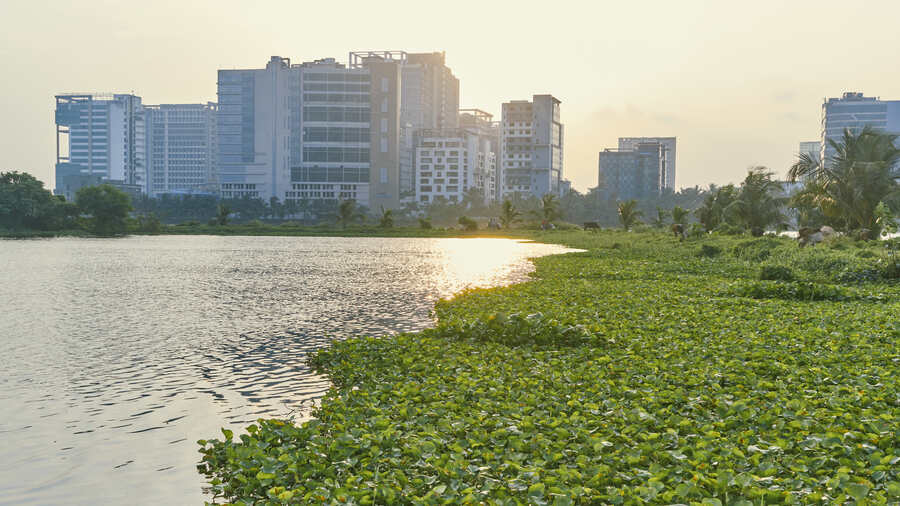A UN report on climate change that sounded a “dire warning about the consequences of inaction” over climate change has highlighted several concerns for cities like Kolkata.
Climate Change 2022: Impacts, Adaptation and Vulnerability says that beyond 2040, climate change would lead to numerous risks and occurrence of multiple climate hazards, often in tandem, in coastal cities like Kolkata.
The report, with 11 references to Kolkata, flags off the threats. and points out the gaps. Some of them are:
- Kolkata lost a substantial portion of its green cover because of Cyclone Amphan. The estimated damage was Rs 1,350 crore. (The latest Forest Survey Report of India pointed out that Kolkata had the least forest cover among seven major Indian cities.)
- Evidence from Kolkata demonstrates the limitations of resilience plans to address underlying conditions of vulnerability.
- Among eight megacities most vulnerable to disaster-related mortality, seven are in Asia: Tokyo, Osaka, Karachi, Kolkata, Manila, Tianjin and Jakarta.
- 411 million people living in 330 cities above 300,000 population are exposed to drought risk. Three of them are Delhi, Karachi, and Kolkata.
- Among the 20 largest coastal cities with highest flood losses by 2050, 13 will be in Asia. Nine of them (Guangzhou, Kolkata, Tianjin, Ho Chi Minh, Jakarta, Zhanjiang, Bangkok, Xiamen and Nagoya) also have an additional risk of subsidence because of sea-level rise and flooding.
- The number of people exposed to storm surge events is highest in Asia. It is projected that by 2050, without adaptation, the annual losses incurred in Guangzhou, Mumbai, Shenzen, Tianjin, Ho Chi Minh City, Kolkata, and Jakarta will increase to around $32 billion.
The report has been co-written by 945 global scientists on behalf of the UN body Intergovernmental Panel for Climate Change (IPCC) and was released on Monday.
“In India, cities stand extremely threatened, particularly those that are at or near coasts like Mumbai, Chennai, Kolkata and Bhubaneswar,” said Anjal Prakash, the lead author of the chapter on cities, settlement and key infrastructure in the report.
Heat stress will be “significant” in the coming years, “while cyclonic systems will also have a greater influence on the metropolis. A recipe for double whammy for Kolkata,” said Prakash.
The intensity of severe cyclones along the Bengal coast is increasing because of warming of the Bay of Bengal, and that is likely to affect Kolkata significantly, said Roxy Mathew Koll, a weather scientist and an author of the IPCC report.
The scientists, however, point out that the city can combat the trend if appropriate measures are taken quickly.
“Green and blue infrastructure needs to be protected and strengthened. While green infrastructure will ensure more focus on urban greening and biodiversity protection to withstand climate anomalies, blue infrastructure, which refers to protection and enrichment of water bodies and rivers, is important for climate resilience,” said Prakash.
Kolkata mayor Firhad Hakim told The Telegraph they were planning to quickly put in place a remedial roadmap to fight back. “My priority is the environment, particularly the impact of climate change,” said Hakim.
Environmentalists say he has to walk and talk.
Aditi Mukherjee, a water expert and an author of the report, said: “We need to do everything possible to protect the Hooghly and wetlands to ensure the city’s survival.”

